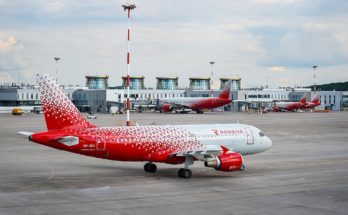by Matthew Beres, Airborne Retrofit & Modernization Analyst, Forecast International.
CTT Systems recently received an order from Eurowings to retrofit its Zonal Drying System on 25 A319 aircraft. The retrofit’s big draw is that it reduces an aircraft’s weight by preventing water accumulation in the fuselage. The weight of just one B737/A320 can be reduced by up to 200-300 kilograms.
Retrofits such as this are part of an emerging trend in the airliner and military transport market. Even cabin lighting and windshields are designed with a focus on increasing fuel efficiency. LED lighting has become one of the fastest growing retrofit markets in the airline industry. LEDs are lighter in weight than traditional lighting, and use less energy and have longer intervals between maintenance and replacement.
GKN Aerospace offers a new main pilot windshield that is 10 percent lighter than current windshields in operation. The windshield’s chemically toughened CE120 glass replaces the thermally toughened glass usually used for cockpit windshields.
Also being developed are aerodynamic technologies to increase fuel efficiency on airliners and military transports. Aviation Partners Boeing’s Split Scimitar Winglet is an example of the type of winglets being installed on a number of airliners to achieve even more aerodynamic efficiency.
A number of transport platforms, such as the C-130 and C-17, are being retrofitted with aerodynamic modifications in order to increase fuel efficiency and improve in-flight stability. The U.S. Air Force, along with Metro Aerospace, has been successfully testing microvanes on the C-17 and C-130. Metro Aerospace plans to additionally develop microvanes for the A400M and C-295. Also, Aviation Partners FlexSys is developing an innovative adaptive flap for commercial aircraft that may be ready for testing in 2020.
Propulsion efficiency improvements are also sought, but only a limited number of such retrofits are offered. Re-engining an airliner or military transport is an extremely expensive undertaking, as witnessed by the C-5 Galaxy re-engining program. However, a handful of Performance Improvement Packages are offered for this purpose. For example, Boeing plans to offer a PIP for the 737 MAX that will improve maximum range from 1.69-2.7 percent, depending on the MAX variant.
Forecast International’s Airborne Retrofit & Modernization Forecast provides operators in the military and commercial aviation sectors with the information they need to maximize their current investments rather than expand their fleets, a trend that is opening up multiple opportunities for the expansion of retrofit and modernization programs. It offers a one-stop service for tracking the status of commercial and military R&M programs in progress worldwide, and pinpoints key developments in the aviation industry that will impact the market in the future.

A military history enthusiast, Richard began at Forecast International as editor of the World Weapons Weekly newsletter. As the Internet grew in importance as a research tool, he helped design the company's Forecast Intelligence Center and currently coordinates the EMarket Alert newsletters for clients. Richard also manages social media efforts, including two new blogs: Defense & Security Monitor, covering defense systems and international issues, and Flight Plan, which focuses on commercial aviation and space systems. For over 30 years, Richard has authored the Defense & Aerospace Companies, Volume I (North America) and Volume II (International) services. The two books provide detailed data on major aerospace and defense contractors. He also edits the International Contractors service, a database that tracks all the contractors involved in the programs covered in the FI library. More recently he was appointed Manager, Information Services Group (ISG), a new unit that encompasses developing outbound content for both Forecast International and Military Periscope.



